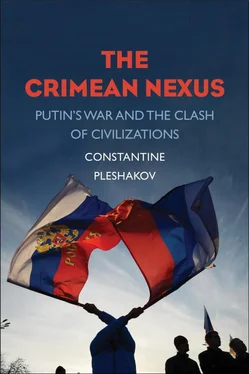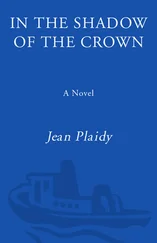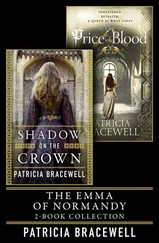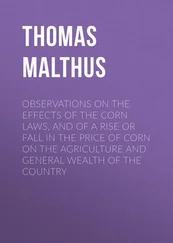Ukrainian military commanders in Crimea found themselves stalked and threatened, mob-style. When threats did not persuade a Ukrainian commander to desert, defect, or surrender, paramilitary groups like the Night Wolves stepped in. On at least one occasion, they kidnapped a high-ranking Ukrainian general.
At the end of February, Russian marines, paratroopers, and military intelligence special forces began to arrive in Crimea, either undercover via legitimate ports of entry or landing at the Sevastopol naval base or at Russian air force bases in the steppes. After their numbers reached six or seven thousand, Russian commandos blockaded Ukrainian troops in their bases. All strategic locations were occupied. One of the first was Chernomorneftegaz (Black Sea Oil and Gas Company) headquarters and its offshore platforms in the Sea of Azov. [19] Ron Synovitz, “Russian Forces in Crimea: Who Are They and Where Did They Come From?” Radio Free Europe/Radio Liberty, March 4, 2014, www.rferl.org/content/russian-forces-in-crimea--who-are-they-and-where-did-they-come-from/25285238.html (retrieved April 18, 2015); Putin’s interview in the documentary “Crimea: A Way Home,” Gazeta.ru, March 15, 2015, www.gazeta.ru/politics/2015/03/15_a_6600065.shtml (retrieved April 17, 2015); Jeremy Hsu, “ ‘Ambiguous’ Warfare Buys Upgrade Time for Russia’s Military,” Scientific American , August 12, 2014; “Ukraine to Lose Offshore Gas Fields in Black Sea,” B92.net, Internet news site of Serbian radio outlet, www.b92.net/eng/news/world.php?yyyy=2014&mm=03&dd=20&nav_id=89717 , March 20, 2014 (retrieved March 23, 2014).
Perhaps the main value of this approach was that Russia’s larger strategic plan remained invisible, and every new step took Ukraine by surprise. The biggest feat in this respect was the neutralization of the Ukrainian navy stationed in the Donuzlav lagoon north of Sevastopol. Instead of engaging it in battle or even threatening to, the Russians just sank four of their own older ships at the mouth of the lagoon. No doubt this was also meant as a macabre joke, a reference to the sinking of the Russian fleet during the Crimean War. [20] Philip Shishkin, “One-Ship Ukraine Navy Defies Russia to the End,” Wall Street Journal , updated March 26, 2014, www.wsj.com/articles/SB10001424052702303949704579461513462696086 (retrieved May 10, 2016).
To make sure NATO understood the seriousness of Russian intentions, Moscow deployed to Sevastopol an advanced coastal defensive missile system, called Bastion. As Putin put it slyly, “We deployed them so they could be seen clearly from space.” The Bastions were a statement. According to foreign experts, the Bastions covered the coast of southern Ukraine, including Odessa, its only major port, and “much of the Black Sea itself.” The missiles were thought to be able to select an individual target from a group “even in a jamming environment.” [21] “Russia Parades Bastion-P in Crimea,” Asian Defense News, May 18, 2014, http://asian-defence-news.blogspot.com/2014/05/russia-parades-bastion-p-in-crimea.html (retrieved May 10, 2016).
Except for a few half-hearted attempts at resistance, Ukrainian forces gave up Crimea without a fight. On March 21, the Russian flag was raised at 147 Ukrainian military facilities in Crimea and on 54 Ukrainian naval ships, including the nation’s lone submarine. [22] “Ukraine’s Military Bases Targeted in Crimea,” Radio Free Europe/Radio Liberty, March 22, 2014, www.rferl.org/content/ukraine-crimea-bases-targetted/25306141.html (retrieved April 18, 2015).
It is important to note that Moscow’s spectacular military success in Crimea was explained not by Putin’s prowess or Russian strategic ingenuity, but by the tragic disarray of the Ukrainian military on and around the peninsula. The infiltration of the “little green men” could have been prevented, or at least effectively contained, had Ukraine maintained even modestly operational border controls and special forces. The entry points were few and well known. The Strait of Kerch (ferries), and the Perekop Isthmus (trains and automobiles) could have been securely blockaded with just a few hundred determined servicemen. The same goes for the perimeters of Russian air force and navy bases, which received planeloads of “polite soldiers.” A combat-ready force of two thousand soldiers might have been all Ukraine needed to deter Russian aggression in Crimea. This should not be too much to ask of a state that, at least on paper, had an army of 130,000. [23] Charles Recknagel, “Explainer: How Do Russia’s and Ukraine’s Armies Compare?” Radio Free Europe/Radio Liberty, March 6, 2014, www.rferl.org/content/russia-ukraine-armies-compare/25287910.html (retrieved April 18, 2015).
A lasting lesson from the 2014 takeover of Crimea is that the “new Russian military strategy” can be used only against failing states. In Ukraine, like an opportunistic infection, it finished off a body already eaten up by disease. Putin’s is a strategy of vultures, not raptors.
With the referendum in progress, on March 11, eighty-five Russian artists and writers published an open letter supporting Putin’s policy in “Ukraine and Crimea.” One of the signers was long dead and another had not been consulted, but the rest of signatures were real. Many belonged to intellectuals typically described as “pro-Western,” including regulars of the Manhattan cultural scene—the pianist Denis Matsuev, conductors Yury Bashmet and Vladimir Spivakov, the dancer Nikolai Tsiskaridze. The father of perestroika and glasnost, Mikhail Gorbachev, called the annexation a “happy event.” He was seconded by the head of the House of Romanov in exile, Grand Duchess Maria Vladimirovna. [24] “Mikhail Gorbachev Hails Crimea Annexation,” United Press International, March 18, 2014, www.upi.com/Top_News/World-News/2014/03/18/Mikhail-Gorbachev-hails-Crimea-annexation-to-Russia/6881395193402 (retrieved May 10, 2016); “Grand Duchess Maria: Russia Will Not Give Up Crimea Despite Sanctions,” Russia Beyond the Headlines, April 17, 2014, http://rbth.com/international/2014/04/17/grand_duchess_maria_russia_will_not_give_up_crimea_despite_sanc_35993.html?code=53cc7f85fa6d4bf192901d08a80d4a5a (retrieved July 1, 2014).
Russian state-controlled media exploited American involvement, making it sound as if U.S. puppeteers now made every decision for Kiev. TV anchors warned that Ukraine could join NATO at any time. Putin and the Russian street saw eye to eye on many things: Crimea as an imperial fetish, the threat from NATO, U.S. involvement in Kiev and military interventions worldwide. The mood in Russia was one of resurgence and Reconquista.
Despite the international outcry, Crimean polls opened as scheduled on March 16. Many Tatars boycotted an election that they could not sway in any case. The official figures—96 percent saying “yes,” with 82 percent turnout—are hard to believe and impossible to verify. Yet observers agree that Crimeans overwhelmingly supported the move. Had the referendum been transparent, with foreign observers present, Crimea would have still voted “yes.” It is hard to explain rationally why Putin would not have allowed that.
In the Kremlin on March 18, with much pomp, Putin signed a “treaty of ascension” of Crimea and Sevastopol to Russia. The Republic of Crimea was incorporated as a federal subject of the Russian Federation, and Sevastopol as a federal city. That put the City of the Russian Glory in the same category with Moscow and St. Petersburg, an unprecedented honor, but also an indication that the fortress would now be ruled directly by the Kremlin. Jubilant Russian social networks spat up a patriotic Twitter hashtag, #CrimeaIsOurs (krymnash). This quickly developed into a noun for the ardent supporters of the Russian president (as in “only krymnashi will be attending”).
Читать дальше












